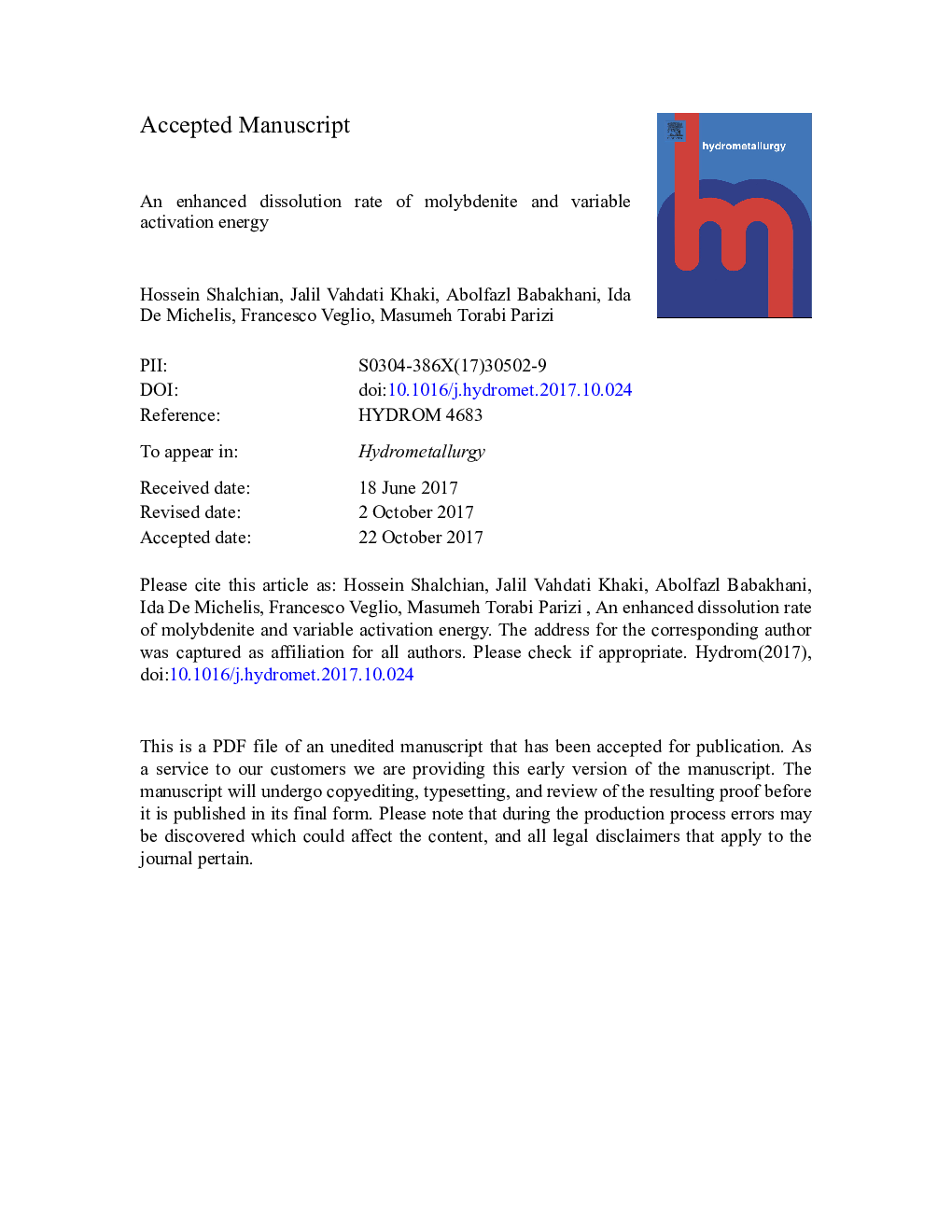| Article ID | Journal | Published Year | Pages | File Type |
|---|---|---|---|---|
| 6659039 | Hydrometallurgy | 2018 | 41 Pages |
Abstract
In this study, mechanical activation was applied to improve leaching rate of molybdenite concentrate. Milling experiments were performed at different conditions of ball to powder weight ratios and activation time. Effect of alumina as a brittle additive was also investigated on the activation process and leaching rate. X-ray diffraction analysis was used to study structural changes of molybdenite during milling. Morphology and particles dimensions were evaluated by SEM, TEM and AFM. Nanometric few-layers of MoS2 particles were observed which were produced during mechanical activation that it can enhance the molybdenite leaching rate, considerably. So that, leaching efficiency of molybdenite increased from 1 to 69% in 1 h at 78 °C only after 4 h of activation. Leaching experiments were carried out in nitric acid media. According to the results, the activation efficiency in presence of alumina is lower than the experiments without additive and increasing activation time is almost insignificant in this case. However, the positive effect of alumina addition is to prevent molybdenite agglomeration during milling, which can postpone leaching process about 2 h. A variable activation energy model was employed to study the dissolution kinetics of activated molybdenite with unusual and non-sphere morphology. The results showed an appropriate data fitting by using the proposed model. Finally, the calculated maximum activation energy of milled samples (104, 101, 85 and 47 kJ/mol) in comparison with un-activated one (107 kJ/mol) revealed that mechanical activation increases the leaching rate of molybdenite significantly, but it depends on milling conditions, certainly.
Related Topics
Physical Sciences and Engineering
Chemical Engineering
Chemical Engineering (General)
Authors
Hossein Shalchian, Jalil Vahdati Khaki, Abolfazl Babakhani, Ida De Michelis, Francesco Veglio, Masumeh Torabi Parizi,
